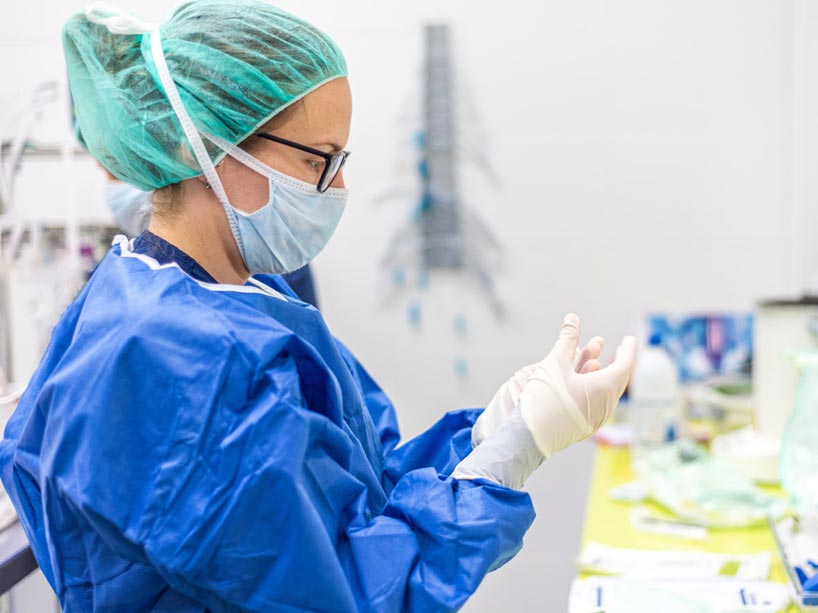Researchers to develop simulation to manage COVID-19 nurse workload

Ryerson researchers are investigating ways to improve infection control routines to address nurse workload and fatigue.
Nurses and health care professionals are working day and night in the fight against the COVID-19 pandemic. Ensuring their well-being is critical, not only to protect their personal health, but to enable hospitals to handle the rising number of patients with the disease.
In response to this issue, Ryerson University researchers are developing a computer simulation that could help hospitals manage staff workloads and care levels. The interdisciplinary team is being led by professor Patrick Neumann, of the Department of Mechanical and Industrial Engineering, and professor Nancy Purdy, of the Daphne Cockwell School of Nursing, in collaboration with co-workers from their respective faculties and experts from the University Health Network (UHN).
The team will create a tool that predicts how different severities of the COVID-19 outbreak and associated safety procedures can impact hospital workforces. They will then use their findings to refine infection control routines at UHN sites.
Co-investigator Nancy Purdy, of the Daphne Cockwell School of Nursing, says that nurses already have highly demanding workloads, and she argues that lessons must be learned from nurses’ experiences during the SARS pandemic, which she documented in a report for the Registered Nurses’ Association of Ontario.
“We noticed in the SARS outbreak in 2003 that a lot of vulnerabilities were exposed, and it really had a lot to do with excessive workload,” said professor Purdy. “That really limits your surge capacity, because if you already have people working at their maximum, there’s no room to go when you’re expecting yet more workload.”
Professor Purdy says the new type of modelling will give hospitals a more proactive approach to planning, adding that she hopes it will be among the innovative tools that can be used for decision-making in the future to improve work environments for nurses.
Creating a virtual care unit
To calculate the impacts of COVID-19 and infection control routines on nurse workload, the team will create a virtual care unit staffed by nurse simulants on standard 12-hour shifts. Variables in the model will include task type, duration and frequency; patient sickness levels; and distance between key parts of the unit. Nurse decision-making processes will also be taken into account.
The simulation will show how the variables affect key measures, such as nurse fatigue, care delivery time, error rate, task completion rate and care levels. This will enable the team to not only create a staff management tool, but also to recommend changes to infection control routines that will minimize their impact on nurse workload and fatigue. The researchers will work with health care professionals at three UHN locations to test the model and create the new routines.
The virtual care unit will be an adaption of an existing model that was created by postdoctoral research fellow Sadeem Qureshi during his recently completed PhD at Ryerson. Qureshi will play a key role in the new project. Completing the team will be co-investigators Michael Grieg of the Department of Mechanical and Industrial Engineering and professor Sue Bookey-Bassett of the Daphne Cockwell School of Nursing at Ryerson, as well as Helen Kelly and Anne van Deursen of UHN.
“Access to an evidence-based modelling tool, which supports clinical leadership in decisions about planning high-quality care environments, quality of work life and safety at the unit level, is a welcome addition,” said Kelly, a clinical research manager at UHN.
The two-year project is one of 49 supported by a Canadian federal government program that is funding research related to COVID-19. The funding was announced in March 2020.
Read more about COVID-19 projects involving Ryerson researchers. (external link)